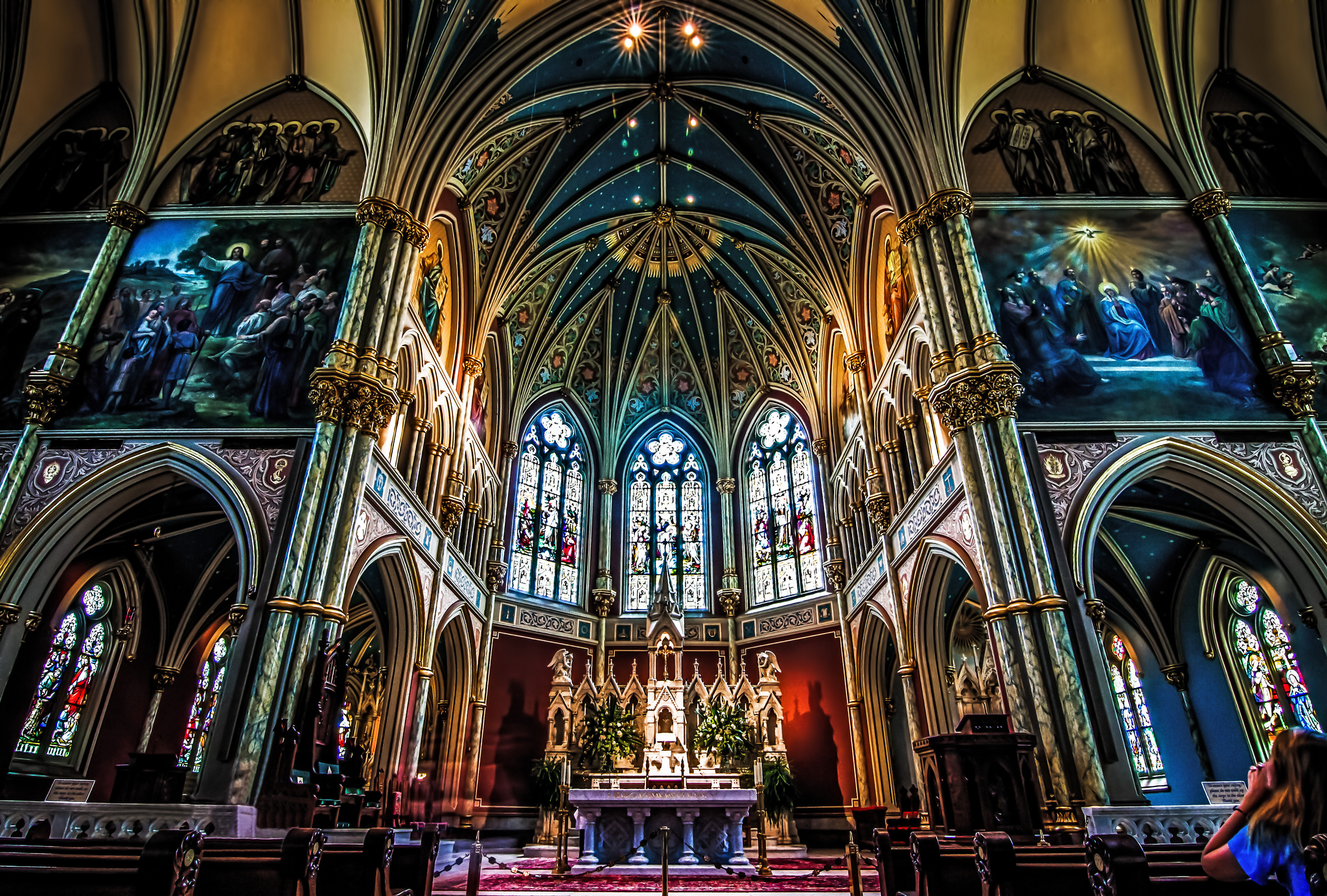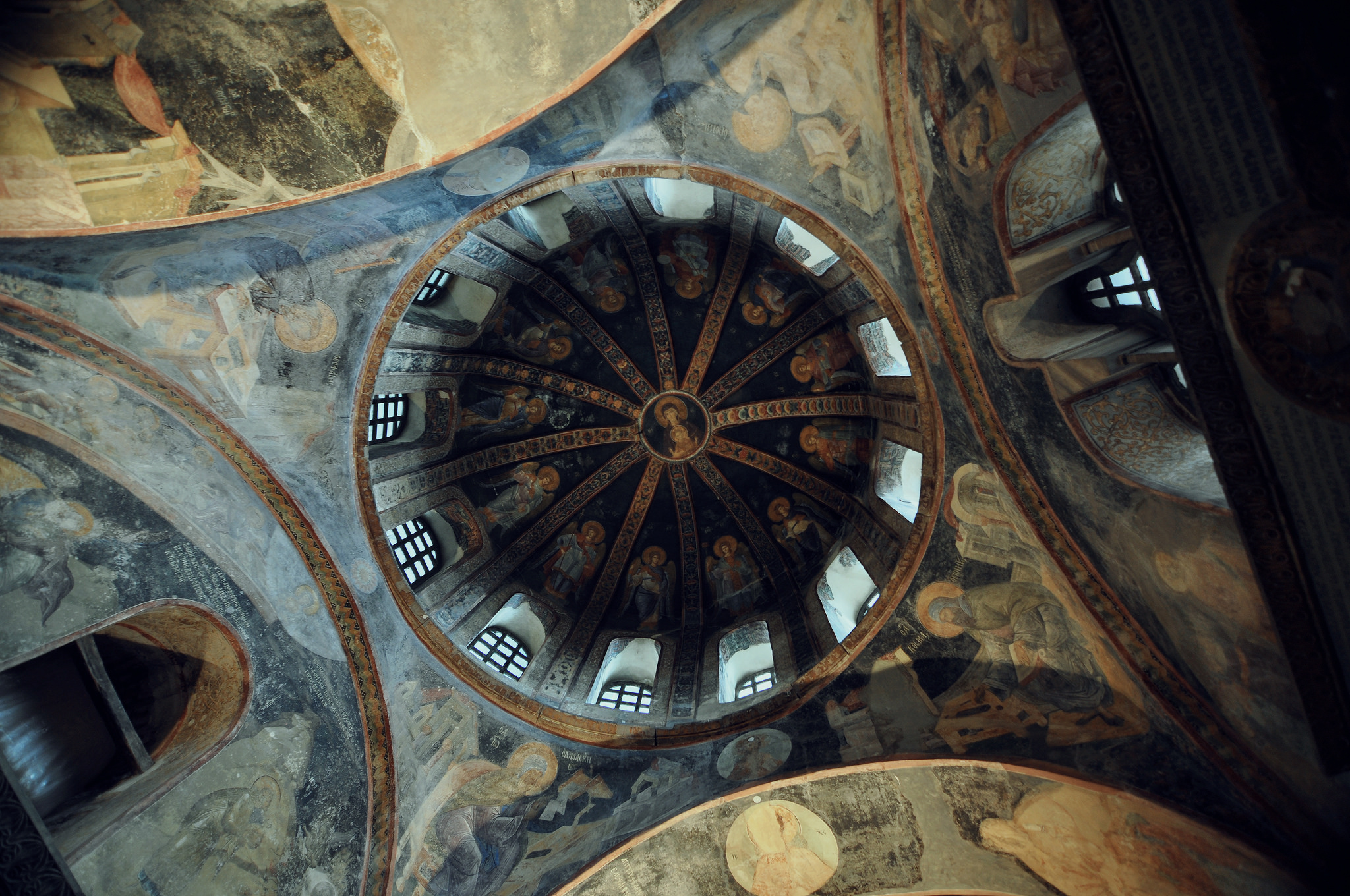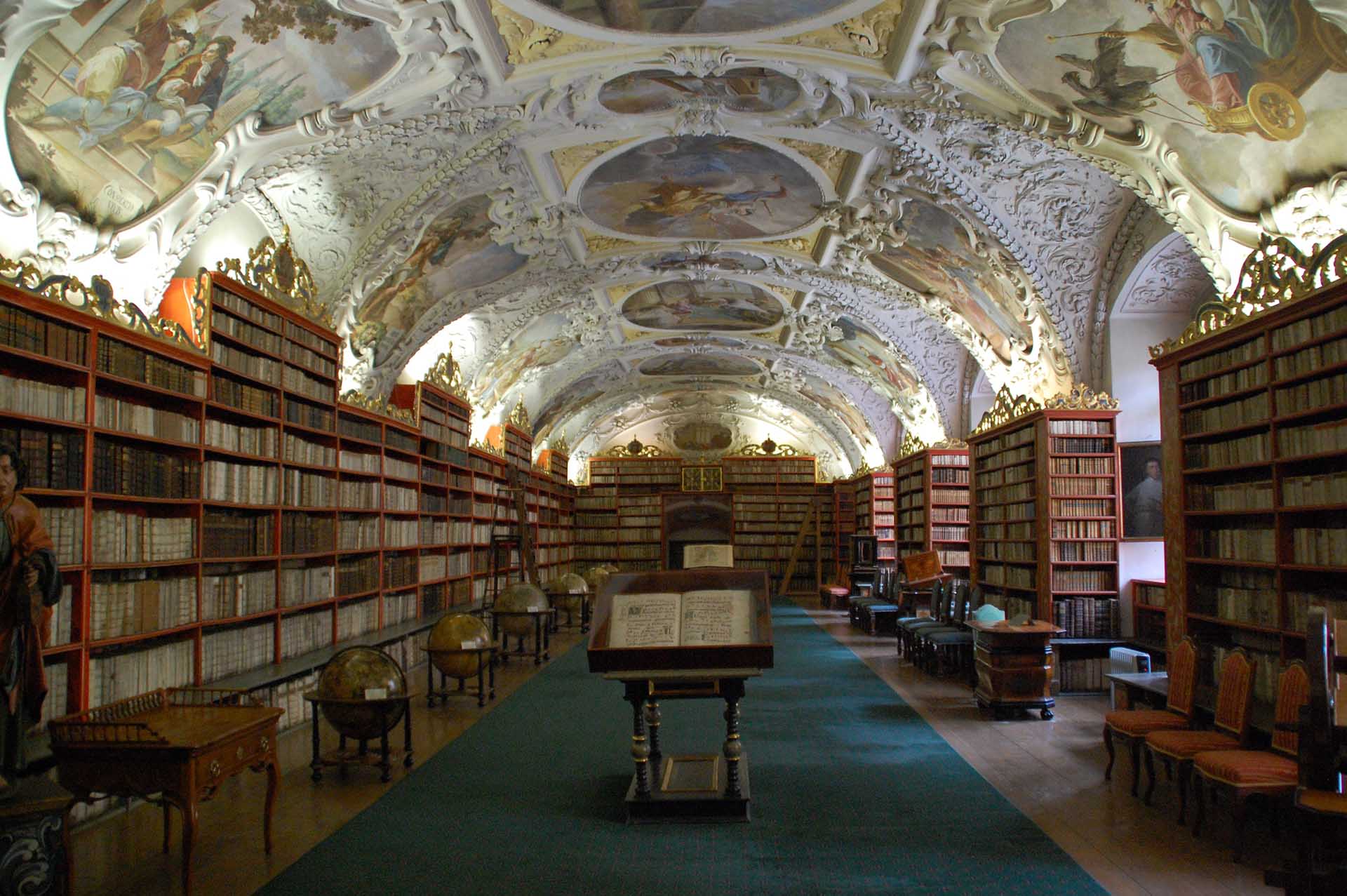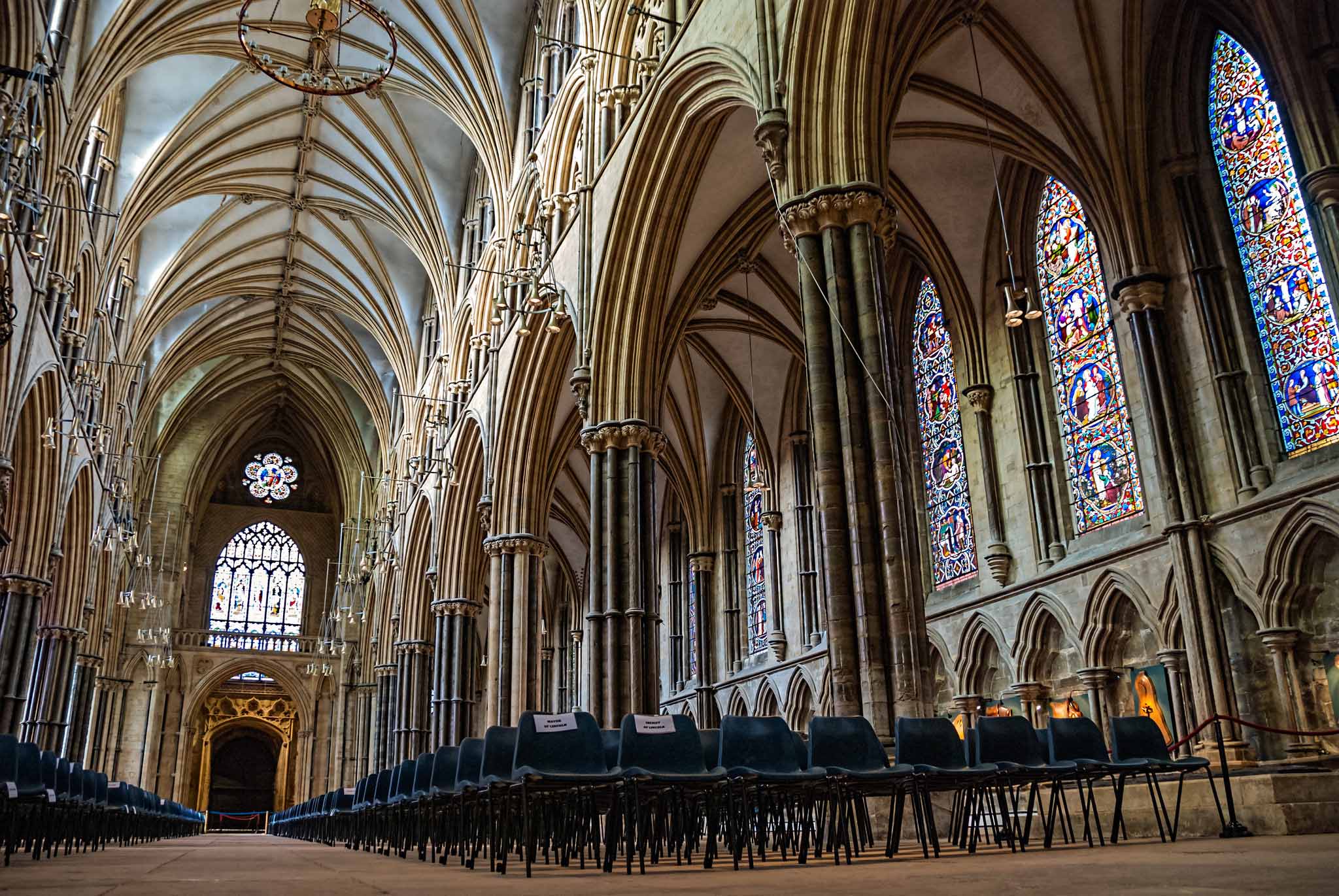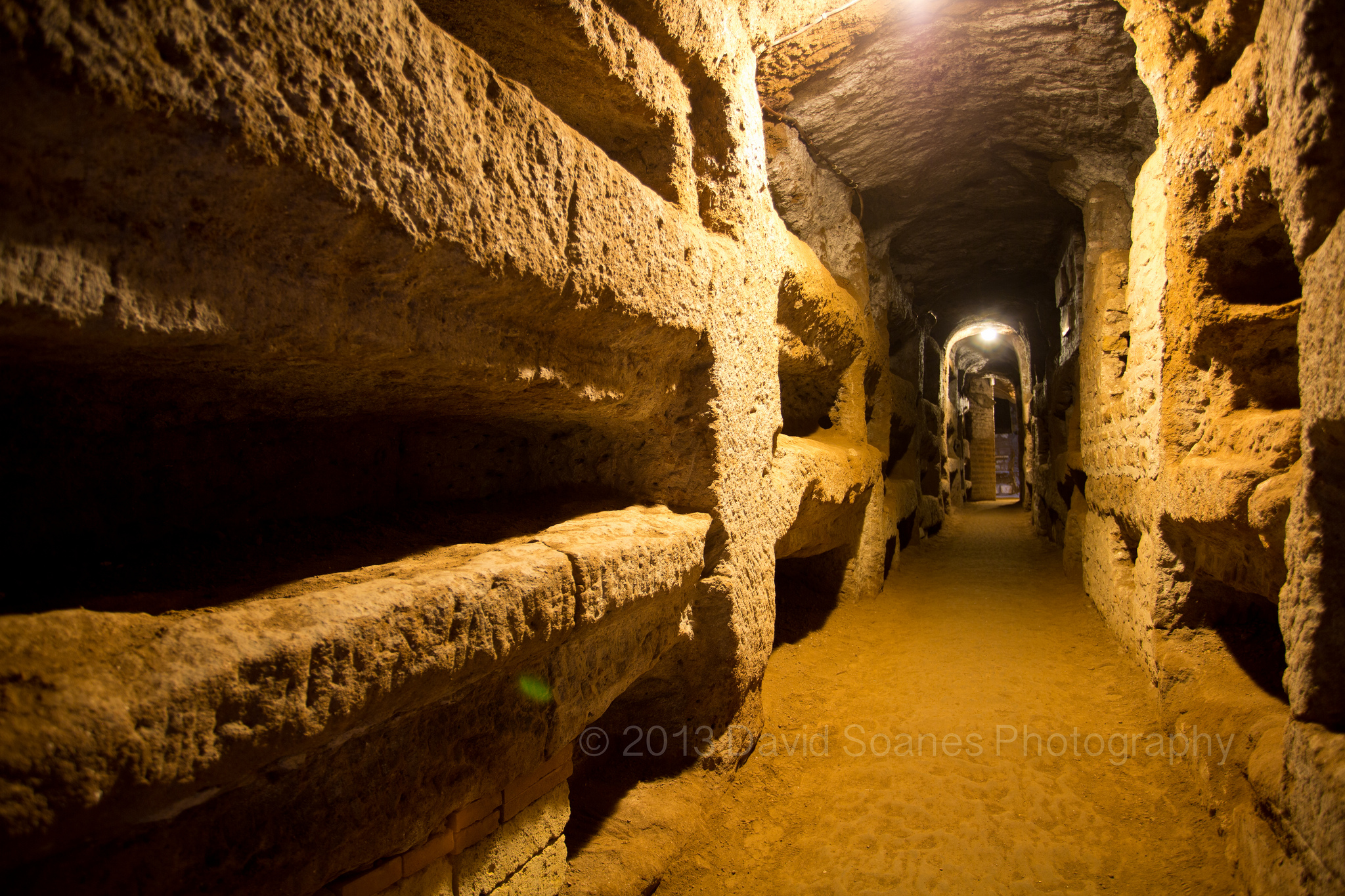The Church of Silence in Russia, Pt. II: 1976 to the present
© Copyright 2011, T. Stanfill Benns (This text may be downloaded or printed out for private reading, but it may not be uploaded to another Internet site or published, electronically or otherwise, without express written permission from the author.)
Introduction
It cannot be thought that Traditionalists in any way are being subjected today to the persecutions endured by the Russian Orthodox and Greek Catholics. Where force and fear may have excused some in Communist countries in those days for attending non-Catholic services, no such excuse is available in a free country. No one forced those exiting the Novus Ordo church following the Vatican II council and the introduction of the NOM into the waiting arms of Traditionalists, and no one can force them to stay there. They choose to do so, outside the clear teachings of the Church, and that is what the word heresy itself means: choice. Those teachings of the Church forbidding Catholics to participate in any way in the services of non-Catholics have been presented before but need to be repeated here in light of what was said in Part I. Readers need to return for a moment to the enforced acceptance of the Orthodox by the defector priest Kostelnyk in the 1940s. Then Greek Catholics were being pressured to merge with the Orthodox or at least give the appearance of having “returned” to that church by attending their services. At that time, Our Lady appeared to a Romanian woman, begging Uniate Catholics to stand firm. The message she relayed is quoted below.
Our Lady speaks for the Church
In 1949, Rev. Mircea Todericu, a priest in exile from Communist Romania reported that Our Lady had appeared to a saintly Romanian woman in a series of five apparitions. In the course of these apparitions — which were not officially approved to the best of our knowledge, although the messages transmitted are perfectly in accord with papal teaching — Our Lady repeated the messages of Fatima and La Salette with special emphasis on the conduct of the clergy in the face of persecution. At that time many priests were defecting to the nationalist Orthodox church set up by the Kremlin, led by the apostate priest Kostelnyk. Our Lady came herself to warn her priests and children that they must not cooperate with such an effort in any way.
“The grave hour in which the Church will suffer much has come…Struggle, struggle, with trust because I have received from the Father the power to destroy the head and the pride of Satan who wishes to destroy the Church and your souls…YOU WHO STRUGGLE AND SACRIFICE YOURSELVES WITH TRUST IN MY HEART ARE FEW. BUT IF ONLY TWO SOULS WILL BE FOUND WHO WILL STRUGGLE WITH FIRM TRUST IN THESE DAYS FULL OF SUFFERINGS, THE FATHER WILL SHOW THEM THROUGH MY HEART THE FRUITS OF MY SUFFERINGS …Pray the Rosary…Don’t think of life and food but of the protection and strength of my Son…Do not give in. Do not let other priests enter into the churches of my Son, priests who have apostatized from the true Faith and who have joined with those of the other faith…The suffering of my Heart is so great when I see the priests who have apostatized from the true faith and my Son…You priests who must confess the Faith, who must be the pillars of the Church of my Son, you to whom the souls of the faithful have been entrusted in order for you to open to them the Way of Truth and to bring them on the road of eternal life, behold how you have wounded my Heart by renouncing my Son and the Heavenly Father. YOU HAVE STEPPED IN THE WAYS OF FALSEHOOD AND OF DEATH, AND INSTEAD OF EDIFYING SOULS, YOU HAVE SOUGHT AND DO SEEK TO RUIN THE CHURCH AND TO LOSE SOULS. YOU ARE THOSE WHO STRIKE CONTINUALLY THE MYSTICAL BODY OF MY SON.
“BEHOLD, MY SORROW IS INDESCRIBABLY GREAT WHEN I LOOK TOWARD YOU BECAUSE YOU DESPISE EVEN THE VICAR OF MY SON, THE ONE WHO IS THE FATHER OF ALL THE TRUE FAITHFUL; you who will not even recognize my Son as your King and Lord of the world and who will not listen to Him and will not submit to Him. BEHOLD, I HAVE COME TO TELL YOU CLEARLY THE WORD: I WISH YOU TO RETURN, TO BECOME AGAIN THE CHILDREN OF THE TRUE CHURCH, PASTORS OF THE SOULS ENTRUSTED TO YOUR PRIESTHOOD BECAUSE MY SON HAS PLACED YOU UNDER MY PROTECTION. I HAVE COME TO COMMUNICATE ALL THESE THINGS SO THAT YOU WILL KNOW WHAT TO DO AND YOU WILL KNOW WHAT THE HEAVENLY FATHER WISHES FROM YOU. I communicate these things to the soul of my Heart who cries, prays, sacrifices itself who suffers day and night for your sins, the sins of you who strike so much the justice of the Heavenly Father.
“If you will not listen to my Heart; if you will not believe in my words addressed to you through this suffering soul; IF YOU WILL NOT RETURN, THE ANGER OF THE HEAVENLY FATHER WILL FALL UPON YOU. I ask prayers, sacrifices; I ask that you repair the insults committed against the Heavenly Father through apostasy, pride and your unbelief in His goodness and power, which He has over you through my Immaculate Heart…” (The complete text of this message is contained in John Haffert’s “Russia Will Be Converted”.)
Our Lady further requested devotion to her Immaculate Heart, daily recitation of the Rosary, the consecration of all churches and homes to her Immaculate Heart and promised protection to those who heeded her requests. Many of the faithful and their Traditionalists today recommend and practice this devotion, yet they fail to expel apostates, heretics and schismatics from their midst; they refuse to avoid their ministrations. Our Lady in this message ordered the Greek Catholic Church “not to separate from the Catholic Church even if the bishops should have to withstand death and shed their blood together with all the priests and faithful.” As evident from what is presented next, Our Lady came only to bring her children the teachings of Faith.
Decisions of the Roman Curia
As Rev. Ignatius Szal explains from the beginning of his Canon Law commentary, “The Communication of Catholics With Schismatics,” such communication in religious rites is forbidden because of accompanying dangers such as perversion of faith and scandal to others. This prohibition of the Church, found in Can. 1258, extends not only to active participation with schismatics in rites that are of their nature non-Catholic, but also excludes communication with them in rites which, though peculiarly Catholic, are exercised under the auspices of a non-Catholic sect. This adds to any other censure a censure also for COMMUNICATIO IN SACRIS and for schism, detailed under Can. 2314. So even if Holy Orders received at the hands of these non-Catholic ministers were valid, the act involved in receiving them would immediately IPSO FACTO depose any cleric for the commission of schism, as specified under Can. 188 §4. Deposed clerics are considered as laymen under the law and if they possess any jurisdiction they are thereby deprived of it. St. Robert Bellarmine cites the unanimous teaching of the Fathers in his work “de Romano Pontifice;” such an opinion is the equivalent of infallibility: “Heretics who return to the Church MUST BE RECEIVED AS LAYMEN, EVEN THOUGH THEY HAVE BEEN FORMERLY PRIESTS OR BISHOPS IN THE CHURCH. St. Optatus (lib. 1 cont. Parmen.).”
First Rev. Szal begins with questions asked the Holy Office concerning the attendance at the Masses of schismatics. On Dec. 5, 1668, the Holy Office ordered a bishop to instruct his people not to go to Mass or other Divine offices in the churches of schismatics, and to warn them that THEY WERE NOT BOUND BY THE PRECEPT OF HEARING MASS WHEN THERE WAS NO CELEBRATION OF A CATHOLIC MASS. Another reply from the Holy Office on April 10, 1704 concerning active participation in schismatic rites brought the following response from the Holy See: “Pope Clement XI (1700-1721) decreed that it was not licit on the principal feasts of the year for converts, in order to avoid persecution, to go to the churches of schismatics, especially during divine services…” On August 7, 1704, The Holy Office also stated that “The decree which prohibited Catholics from being present at the Masses and prayers of schismatics APPLIED ALSO IN THOSE PLACES WHERE THERE WERE NO CATHOLIC PRIESTS and with reference to such prayers as contained nothing contrary to faith and the Catholic rite.” On two other occasions, May 10, 1753, and April 17, 1758, the Holy See again forbade Catholics to participate in the masses of schismatics. In 1769, certain priests “were called to task for joining in the celebration of Mass with schismatics. The ignorance was inexcusable, and the act was a sacrilege which violated the true faith.”
In order to participate in such functions, Rev. Szal points out, one would need “an authorization or dispensation from the visible head of the Church.” Continuing his assay of Holy Office pronouncements, Szal lists further decisions concerning Holy Communion. On June 17, 1839, The Sacred Congregation for the Propagation of the Faith forbade the reception of Holy Communion from an heretical priest. A general prohibition against receiving any sacraments from schismatics was issued by Pope Clement VIII (1592-1605). Benedict XIV (1740-1758) also forbade the use of the services given by schismatics for the conferring of the sacraments. Rev. Szal gives this stunning summary of these decisions as follows: “From the nature of the response which the Holy Office gave to questions concerning the reception of absolution and Extreme Unction from schismatics on the part of persons who are in danger of death, IT SEEMS TO BE THE MIND OF THE CHURCH THAT VIATICUM SHOULD NOT BE RECEIVED FROM SCHISMATICS UNDER ANY CONDITIONS.”
In 1631, Rev. Szal reports on the Holy Office’s various decisions concerning the use of faculties and the hearing of confessions. He writes: “The Sacred Congregation for the Propagation of the Faith stated that priests could seek permission for the use of their faculties from bishops who were regarded to be Catholic, provided that the priests had that degree of certitude regarding the orthodoxy of the bishops which excluded all suspicion of the schism or the error current in that region as attaching to them,” (Ibid). In answer to further doubts that same year, “the same Congregation replied that it was not permissible to seek the permission FOR THE USE OF EVEN ONE OF THE FACULTIES from schismatic bishops. It insisted that the clause which had stated that permission was to be sought must be understood in regard to bishops who were in communion with the Church of Rome. There was asked the further question whether this permission could be obtained from schismatic pastors, but the reply of the Congregation was the same as that in regard to schismatic bishops.
“On May 15, 1709, the Holy Office forbade Catholics to hear the confession of schismatics or to confess to them…UNDER NO CIRCUMSTANCES, NOT EVEN IN THE CASE OF NECESSITY, ACCORDING TO A RESPONSE OF THE SACRED CONGREGATION FOR THE PROPAGATION OF THE FAITH ON FEB. 17, 1761, WAS IT PERMISSIBLE FOR A CATHOLIC TO CONFESS HIS SINS TO A SCHISMATIC PRIEST IN ORDER TO OBTAIN ABSOLUTION FROM HIM…” In a question presented to the same Congregation in 1839, the following reply was made: “Ethiopian converts were not to receive the sacrament of Penance from an heretical priest.” When the Congregation was asked about whether such a practice could be tolerated in a case of necessity, “the Congregation furnished the ironical if not indignant reply, ‘Nihil esse respondendum.’” Rev. Szal comments: “The answer to the question appeared so manifest that to raise the question at all branded the questioner’s action as foolhardy, and consequently as deserving no reply.” Szal notes that, “It is gravely illicit to request or receive the sacrament of Penance from a schismatic minister outside the danger of death. The ordinary necessity which a person senses when he is in the state of mortal sin is not sufficient to allow him to confess to a schismatic priest and receive absolution. Such a person would be obliged to make a Perfect Act of Contrition as best he could…”
Clearly the Holy Office would not today accept “necessity knows no law” or “impossibility excuses” as valid reasons for resorting to the services of schismatics. Impossibility excuses from the OBSERVANCE of the law; as the decision cited by Rev. Szal states above, impossibility excuses the faithful from attending Mass when the only way they could fulfill this obligation is to attend schismatic services. And while necessity may know no law, certainly this is not a license to grant dispensation from Divine laws and infallible law. As Rev. Raymond Kearney, quoting several other approved theologians observes: “The Church can supply only that power the disposition of which is entrusted to Her; She cannot, therefore, supply what is required by Divine or natural law,” (“The Principles of Delegation,” 1929). Only the Pope may supply. Without the Pope, the supplying factor is entirely lacking, save in danger of death. The last laws setting out the procedure to follow during an interregnum were given to us in 1945, (see “…Rebutting Ruby’s Rant” under this topic).
Not even the Cardinals are allowed to change anything in the Canons or papal law, in whole or in part, or to grant dispensations from the law outside a very narrow window granted the cardinals only where papal elections are concerned. Nothing is to be done until a new pope is elected. And Tradtionalists have never produced one scintilla of information that gives them a positive indication or directive to provided Mass and Sacraments, ordain and consecrate, during an interregnum. They cannot, since Pope Pius XII’s last directive authoritatively forbid such activities. But Traditionalists are ever the exception, and they do not hesitate to level their venom at those who do not join them in breaking the law. Yet “homealoners” have chosen the better part, and perhaps it is time they demanded the respect for this decision that they deserve.
The “Church of Silence” today
For the past few decades, Tradtionalist clergy and members have harassed and harangued those defying the herd and keeping their faith in the privacy of their homes. This because “homealoners,” as one Traditionalist minister deprecatingly refers to them, are raining on Traditionalists’ straggling and unimpressive parade, pretending to perpetuate the Catholic Church as it existed in the time of Pope Pius XII. But as pointed out in previous articles, Traditionalists do not perpetuate the faith of the One, Holy, Catholic, Apostolic and Roman Church of the ages; far from it. Instead they have defied the Church’s interpretation of Holy Scripture, also Canon Laws and infallible Church teaching, to erect a pseudo-church outside the true Church of Christ, (see “…Rebutting Ruby’s Rant” on this topic). Styling themselves by different sectarian names after the manner of non-Catholics (all encompassed here in the generic term Traditionalists) they have splintered off over the decades into competing sects, all claiming to represent the True Church. In this they very much resemble the schismatic/heretical Old Catholics and Old Roman Catholics and their subsequent sects, too numerous now to even name.
Those keeping the faith privately have not, as a rule, launched any kind of campaign to defend themselves, knowing what they believe, but not always able to express it in a convincing way. They have no real leader, although some among them have stood up for their faith and made themselves heard. They gather quietly here and there, usually as families and sometimes with a few Catholic friends, to keep their faith. Very seldom are they truly “home alone,” unless widowed or forced to lead a solitary existence for other perfectly legitimate reasons. The “home alone” moniker suggests abandonment and dejection, as intended, and caught on because it borrowed the term from a movie series popular at the time. But it is a derogatory handle that in no way reflects the long and proud tradition those choosing to keep the faith in this manner follow. While one writer has suggested “recusants” as a substitute for “home alone,” it is not what faithful Catholics in the past, persecuted and deprived of their churches and clergy have called themselves. While this word is a fairly accurate description of what Catholics not attending Traditionalist services do, the simple will not readily understand it and it has no real tradition in the Church where usage is concerned.
Where did persecuted Christians first take refuge in the early ages of the Church? The catacombs, of course. The Catholic historian H. Daniel-Rops wrote in France in 1948: “The catacombs are…the predestined place where it is easiest for us to evoke the memory of our ancestors in Jesus, who sowed the Gospel seed deep in the heart of our civilization. They form the indestructible symbol of that perilous and semi-secret existence which the Church led in the very period when she was conquering the world, just as their walls still express in a thousand and one ways the two great virtues which, when all else is said and done, enabled that triumph to take place [faith and love]…It was only when persecution waxed fiercest that, rather than hold services in the houses of the faithful or in buildings specially consecrated for the purpose, people judged it wisest to meet deep in the entrails of the Christian earth. During the systematic persecution of the third century, the catacombs were actually equipped as veritable hiding places, with blocked galleries, false exits, and secret openings into the nearby quarries.
“It is the whole life of the primitive Christians — all their piety, their communal feeling, their care for the fugitives and their long-suffering courage — which survives in these necropolises as a living memory…It is impossible for a Christian to penetrate the length of these underground passages, where the air is stagnant with the stench of dampness and of burnt wax, without feeling vividly aware of a presence all about him. Here they are, these tens of thousands of believers, whose prayers filled those dark depths with their murmuring; and despite the empty tombs here they will always remain, those who sleep here in the peace of Christ…These early Christians are the living link which binds us — the Christians of today — to the Apostolic Age and to the memory of the Savior Himself,” (“The Church of the Apostles and Martyrs,” E. P. Dutton and Co, New York, N.Y; translated into English by Audrey Butler, 1960).
The Catacombs are the link to that precious Church, first to suffer persecution — and to the Church of Silence behind the Iron Curtain — which produced so many martyrs in the last century. When Pope Pius XII died in October, 1958, the Church of Silence fell into the hands of the enemy in Rome, and in due time those fighting worldwide to preserve their faith — once the false Vatican II changes were introduced — became joined to them in spirit, whether they understood this or not. For then as the Orthodox elder quoted in Part I of this work foretold, what happened to Russia indeed happened to America. Already Pope Pius XII had mentioned this persecuted Church in “home alone” terms when he delivered this address on “The Mission of Catholic Women” Sept. 29, 1957: “ The initiative of the lay apostolate is perfectly justified even without a prior explicit ‘mission’ from the hierarchy…Personal initiative plays a great part in protecting the faith and Catholic life, especially in countries where contacts with the hierarchy are difficult or practically impossible. In such circumstances, the Christians upon whom the task falls, MUST, WITH GOD’S GRACE ASSUME ALL THEIR RESPONSIBILITIES. EVEN SO, NOTHING CAN BE UNDERTAKEN AGAINST THE EXPLICIT OR IMPLICIT WILL OF THE CHURCH, OR CONTRARY IN ANY WAY TO THE RULES OF FAITH OR MORALS OR ECCLESIASTICAL DISCIPLINE.”
Pope Pius XII knew what would happen after his death; this is clear from his constitutions on papal elections, defining what can and cannot be done during an interregnum. He already knew what Giovanni Montini (Paul 6) had done in Russia, betraying all those bishops sent into that country and condemning them and those they ordained and consecrated to a horrific death. Catholic Action was the mandate Pius XII gave to the Catacomb Church and it is our mandate; we do not need permission from Traditionalists or their illicit priests, operating outside all rules of faith, morals and ecclesiastical discipline, in order to act. Notice that we are commanded (“must”) — not only merely permitted — to engage in Catholic Action, in everything that pertains to preserving faith and morals. In his address “The Lay Apostolate,” written later that same year, Pope Pius XII urges Catholics to undertake “the formation of lay apostles to compensate for the shortage of priests…IN CERTAIN COUNTRIES WHERE COMMUNISM IS IN POWER, IT IS REPORTED THAT RELIGIOUS LIFE HAS BEEN ABLE TO CONTINUE UNDERGROUND THANKS TO THE WORK OF LAY APOSTLES, EVEN AFTER THE ARREST OF THE PRIESTS.” And how else would it have continued there if not by Catholics gathering in their homes, or in a church together, or in some secret place to say the Mass prayers, sing hymns and make acts of Spiritual Communion? Pope Pius XII, then, gave his approval long ago to the practices Traditionalists condemn today. We are the ones following in the footsteps of the ancient Catacomb Church, always in communion with the successor of St. Peter. Traditionalists are the ones who, in name and practice, have departed from communion with the Church.
Conclusion
At least in this country, and at this time, the Holy Sacrifice of the Mass is no longer available to us. The Continual Sacrifice has ceased; for even if scattered priests and bishops who are valid and licit yet offer a true Sacrifice pleasing to God here and there across the world, it is not continual but sporadic. Wherever those bishops and priests are, we join our prayers to theirs and beg God to restore His Church, if that truly is His will. We beg Him also to grant graces to our separated brethren to see the error of their ways and to join us in the silence and peace of the Catacombs. For it is here that we join our prayers and sufferings with those who know their value; those who gave far more, far longer and loved with that eternal love that now burns brightly before God’s throne. What a joy, what a privilege to suffer with them, to know they see us and intercede for us, to know that someday, God willing, we will rejoice with them in Heaven. Traditionalists berate us for pricking their consciences, for destroying what they believe to be the Church. But that idea of the Church is an illusion, proceeding from nowhere and based on nothing. We are not alone here; do they not remember that wherever two or three gather in God’s name He is in the midst of them? And we have not yet reached our eternal home, but here we find the sustenance we need to survive spiritually until our mission to keep the faith and spread it is finished, and we leave this earth. Until then, please call us by our true name — Catacomb Catholics — for this is who, in truth and spirit, we strive to be; these are the saints and martyrs with whom we cast our lot.
